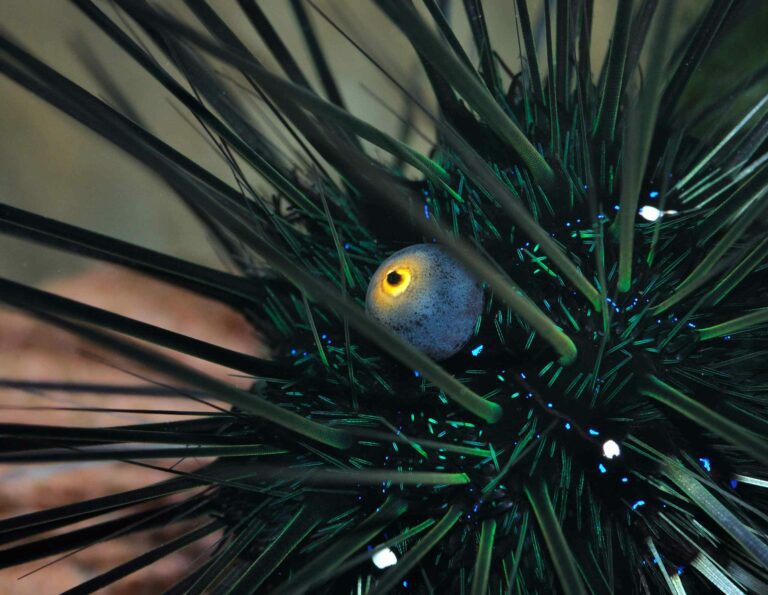An alarming parasitic killer that reduces black sea urchins to skeletons within two days has spread from the Mediterranean through the Suez Canal – wiping out urchin populations in the Gulf of Aqaba and threatening a knock-on effect on Red Sea coral reefs further south.
Scientists at Tel Aviv University in Israel have been investigating the epidemic, which they say has killed all the black sea urchins (Diadema setosum) in the gulf in a matter of months. The eradication matters because sea urchins, and this species in particular, are considered essential for the healthy functioning of coral reefs.

The killer is believed to be the same or a similar pathogenic ciliate parasite that in the 1980s almost eradicated the Caribbean sea urchin population, causing what the scientists say was irreversible damage to its coral reefs. Last year the disease broke out again in the Caribbean, wiping out surviving urchin populations. The killer was only recently identified as a ciliate, as reported on Divernet in April.
The scientists say that after extensive urchins deaths had been noted in the waters off Greece and Turkey it is also now being reported in other countries further south apart from Israel, including Jordan, Egypt and Saudi Arabia. With the epidemic spreading at what they call an unprecedented rate, they have submitted an urgent report to the Israel Nature & Parks Authority, and say that emergency steps for saving coral reefs are under discussion.
With coral already at risk because of climate change, “a previously unknown variable has been added”, say the researchers, who are led by Dr Omri Bronstein. “The sea urchins are the reef’s ‘gardeners’,” he says. “They feed on the algae and prevent them from taking over and suffocating the corals that compete with them for sunlight.
“Unfortunately, these sea urchins no longer exist in the Gulf of Eilat [Aqaba] and are quickly disappearing from constantly expanding parts of the Red Sea further south.
“At first we thought it was some kind of pollution or poisoning, or a local chemical spill, from the industry and hotels in the north of the Gulf of Eilat, but when we examined additional sites in Eilat, Jordan and Sinai, we quickly realised that this was not a local incident. All findings pointed to a rapidly spreading epidemic.”
Even sea urchins grown for research in university aquariums had died, thought to have been affected by the pathogen finding its way in through pumping systems. “It’s a fast and violent death,” says Dr Bronstein. “Within just two days a healthy sea urchin becomes a skeleton, with massive tissue loss.
“While some corpses are washed ashore, most sea urchins are devoured while they are dying and unable to defend themselves, which could speed up contagion by the fish who prey on them.”

Black sea urchins were themselves an invasive species in the Mediterranean, having been found there only from 2006, but they remained an insignificant presence until 2018, when populations of tens of thousands became evident in Greek and Turkish waters.
“In the Red Sea, mortality is spreading at a stunning rate, and already encompasses a much larger area than we see in the Mediterranean,” said Dr Bronstein. “In the background there is still a great unknown: What is actually killing the sea urchins? Is it the Caribbean pathogen or some new, unfamiliar factor?
“Either way, this pathogen is clearly carried by water, and we predict that in just a short time, the entire population of these sea urchins, in both the Mediterranean and the Red Sea, will get sick and die.”
Dr Bronstein is suggesting that a “broodstock” population of healthy urchins from Israel’s Mediterranean coast should be established urgently, so that if they are wiped out in the Red Sea they can be re-established at a later date. “This is a complex task, but it is absolutely necessary if we wish to ensure the survival of this unique species that is so critical to the future of coral reefs.”
The Tel Aviv University team’s studies of the issue are published in Royal Society Open Science and Frontiers in Marine Science.
Also on Divernet: Blue Goos & urchins with hats – but why?, The unsung reef

